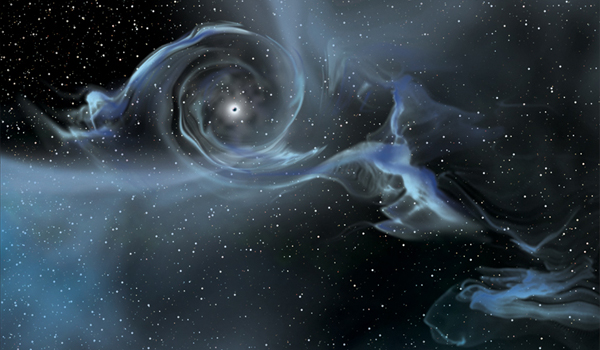What's at the Center of Black Holes?

Produced from the implosion of massive stars, black holes are wells in the fabric of space-time so deep that nothing, not even light, can escape them.
At the center of a black hole is what physicists call the "singularity," or a point where extremely large amounts of matter are crushed into an infinitely small amount of space.
"From a theoretical point of view, the singularity is something that becomes something infinitely large," said physicist Sabine Hossenfelder at the Nordic Institute for Theoretical Physics.
Technically, that "something" is the curvature of space, or the heightened gravity that scientists have observed in the presence of very large masses like planets and stars.
Similar to how a stretched rubber sheet dips around a bowling ball, massive objects can cause space-time to curve around them. And the more massive the object is, the steeper the curvature will be. First theorized by Einstein, nowhere is this effect more extreme than for a black hole, whose center represents an infinitely curving curve. Like a bottomless hole in a rubber sheet, the force becomes infinitely bigger as objects travel further and further into the hole.
Around the singularity, particles and materials are compressed. As matter collapses into a black hole, its density becomes infinitely large because it must fit into a point that, according to equations, is so small that it has no dimensions.
Some scientists have debated whether the theoretical equations that describe black holes are correct – meaning whether they actually exist.
Get the world’s most fascinating discoveries delivered straight to your inbox.
No one can be sure that their singularity doesn't describe a physical reality, Hossfelder told Life's Little Mysteries. But most physicists would say that the singularity, as theorized by equations, doesn't really exist. If the singularity was "really real," then it would mean that "energy density was infinitely large at one point," exactly the center of the black hole, she said.
However, no one can know for sure, because no complete quantum theory of gravity exists, and the insides of black holes are impossible to observe.
Follow Life's Little Mysteries on Twitter @llmysteries, then join us on Facebook.



